Related Research Articles
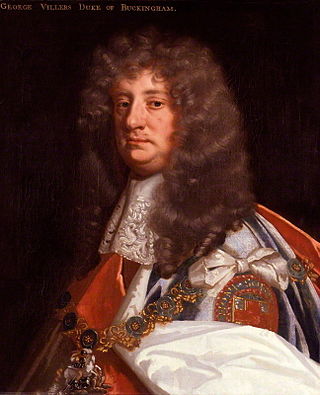
George Villiers, 2nd Duke of Buckingham, 20th Baron de Ros, was an English statesman and poet who exerted considerable political power during the reign of Charles II of England.

John Graham, 7th of Claverhouse, 1st Viscount Dundee was a Scottish soldier and nobleman, a Tory and an Episcopalian. He was responsible for policing southwest Scotland during and after the religious unrest and rebellion of the late 17th century, and went on to lead the Jacobite rising of 1689.
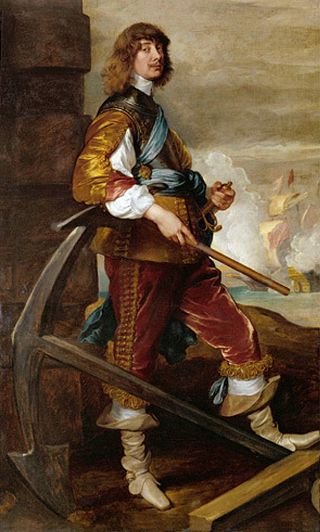
Algernon Percy, 10th Earl of Northumberland, 4th Baron Percy, KG, JP was an English aristocrat, and supporter of the Parliamentary cause in the First English Civil War.

Earl of Dundee is a title in the Peerage of Scotland. It was created in 1660 for John Scrymgeour, 3rd Viscount Dudhope. At his death in 1668, the Duke of Lauderdale declared that the first Earl had no heirs-male, and had the crown seize all of his lands. The earldom of Dundee became dormant and its holdings and offices were granted to Charles Maitland, 3rd Earl of Lauderdale, the Duke's younger brother. The title was revived in 1953, when it was determined that the first Earl did indeed have heirs-male, contrary to the assertion of the crown. The title was given to Henry James Scrymgeour-Wedderburn, who had previously served in the House of Commons and in the Cabinet.

Spencer Compton, 2nd Earl of Northampton, styled Lord Compton from 1618 to 1630, was an English soldier and politician who sat in the House of Commons from 1621 to 1622. He became a peer by writ of acceleration in 1626 and by inheritance in 1630. He fought in the Royalist army and was killed in action at the Battle of Hopton Heath.

Alexander Henry Scrymgeour, 12th Earl of Dundee,, is a Scottish peer, Conservative politician and Chief of the Clan Scrymgeour.

The Bearer of the Royal Banner is one of the Great Officers of the Royal Household in Scotland. The bearer participates in royal, state, and other ceremonial events when needed.
Robert Ker, 1st Earl of Roxburghe was a Scottish nobleman.

Henry James Scrymgeour-Wedderburn, 11th Earl of Dundee, was a Scottish nobleman, soldier and politician.
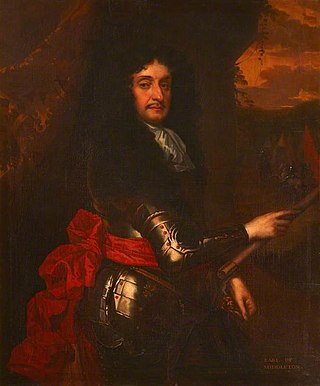
John Middleton, 1st Earl of Middleton was a professional soldier and mercenary from Kincardineshire in Scotland. Beginning his career in the Thirty Years War, during the Wars of the Three Kingdoms he fought for the Covenanters and Parliamentarians until 1648, when he switched sides to the Royalists.
Claud Hamilton, 2nd Baron Hamilton of Strabane was the founder of the Strabane branch of the Hamiltons. He died relatively young at about 32 and his wife, Jean Gordon, married Sir Phelim O'Neill, one of the leaders of the 1641 rebellion, after his death.
Sir George Hamilton, 1st Baronet of Donalong and Nenagh, was born in Scotland, but inherited land in Ireland. Despite being Catholic, he served his Protestant brother-in-law, the 1st Duke of Ormond, lord lieutenant of Ireland, in diplomatic missions during the Confederate Wars and as receiver-general of the royalists. He also defended Nenagh Castle against the Parliamentarians during the Cromwellian conquest of Ireland. Hamilton was father of Anthony, author of the Mémoires du Comte de Grammont, of Richard, Jacobite general, and of Elizabeth, "la belle Hamilton".
Colonel James Hamilton was a courtier to Charles II after the Restoration. He appears in the Mémoires du Comte de Grammont, written by his brother Anthony.
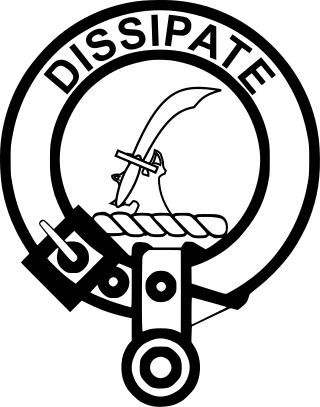
Clan Scrymgeour is a Highland Scottish clan.
The Treaty of Uxbridge was a significant but abortive negotiation in early 1645 to try to end the First English Civil War.
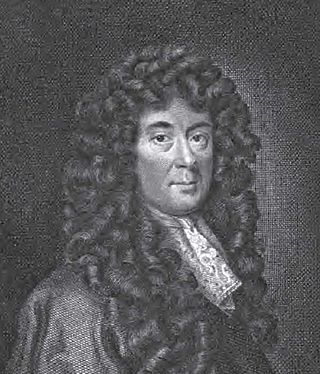
Sir George Mackenzie of Rosehaugh was a Scottish lawyer, Lord Advocate, essayist and legal writer. He was nicknamed Bloody Mackenzie.
John Lyon, 3rd Lord of Glamis was a Scottish nobleman.
William Ramsay, 1st Earl of Dalhousie was a Scottish nobleman, army officer and politician.
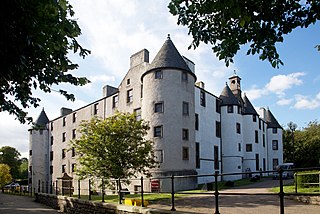
James Scrimgeour Scottish landowner and Constable of Dundee.
References
- Wasser, Michael (2004). "Scrymgeour, Sir James, of Dudhope (c.1550–1612)". Oxford Dictionary of National Biography. Oxford University Press. doi:10.1093/ref:odnb/24972.
- Attribution
 This article incorporates text from a publication now in the public domain : Millar, Alexander Hastie (1897). "Scrymgeour, James". In Lee, Sidney (ed.). Dictionary of National Biography . Vol. 51. London: Smith, Elder & Co. p. 152. sources used by the DNB:
This article incorporates text from a publication now in the public domain : Millar, Alexander Hastie (1897). "Scrymgeour, James". In Lee, Sidney (ed.). Dictionary of National Biography . Vol. 51. London: Smith, Elder & Co. p. 152. sources used by the DNB: - Douglas's Peerage, sub voce Scrymgeour;
- Register of Privy Council, vols. iii–viii.
- Millar's Roll of Eminent Burgesses of Dundee, pp. 49, 83, 109, 164
- Scrymgeour MSS. in Dundee Charter-room;
- Reg. Mag. Sig. 1546–1620
- Foster's Members of Parliament of Scotland.